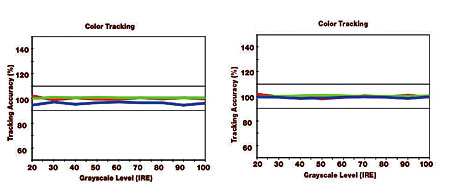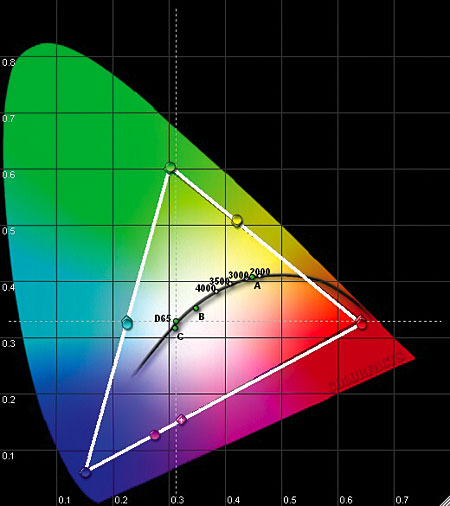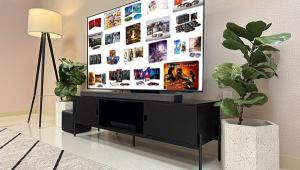Panasonic TC-P46G10 Plasma HDTV HT Labs Measures
Black: 0.009
White: 28.53
Full-On/Full-Off Contrast RaTio: 3,150:1
For the image adjustment settings, go to www.HomeTheaterMag.com. All the measurements were taken with the set in THX mode, calibrated and adjusted for the most accurate image.
The full-on/full-off contrast ratio above is very good, though not spectacular, for a plasma. Its blacks were slightly deeper than on the last comparably priced Panasonic we reviewed. While the peak-white brightness is considerably lower than what you can get from an LCD, it produced a more than adequate brightness for a room with dim to average lighting. The Vivid mode can put out in excess of 80 foot-lamberts, but it’s far less natural looking than the THX mode.
The Color Tracking charts below show how closely a display adheres to the D65 standard white point; the tighter the overlap of the three primary colors, the nearer the result is to D65. The Before Calibration result shows a respectable clustering of the three colors. It also produced a reasonably accurate Delta E across the full brightness range. (Delta E shows how closely a set adheres to the D65 standard.) The After Calibration result is even better, with the colors even more tightly matched and the Delta E well below the point at which any deviation from a perfect gray scale is visible to the eye. The Panasonic’s color tracking is one of the best we’ve seen in a flat-panel display.

The pie-shaped CIE chart below shows that the Panasonic also produces a very accurate color gamut. The white triangle (the measured result) virtually overlaps and obscures the black triangle (the Rec. 709 HDTV standard). But if you engage Color Management (it only offers On and Off positions), the green becomes slightly oversaturated (not shown). If you use the Custom or Standard Picture modes, even with Color Management off, both green and red will be oversaturated (not shown).

The Panasonic’s static luma (black and white) and chroma (color) HDMI resolutions were excellent at 1080i (component and HDMI) and 1080p (only HDMI tested). It dropped off only marginally at 720p and returned to excellent at 480p (within the latter’s more limited bandwidth). Its worst resolution was at 480i; it was satisfactory in HDMI but only fair in component. But both 480i and 480p had at least some luma and chroma response at the maximum frequencies expected for each of those formats. Our tests indicated that the set’s full-motion HD resolution can’t quite reach the claimed 1080p level, but it comes impressively close. (We’ve never tested a set that could maintain full-motion resolution at 1080p.)
The Panasonic produced zero overscan in 1080i or 1080p (component or HDMI). For 720p and 480i/p (component or HDMI), it averaged just a trace over 2.5 percent on each side, a satisfactory value that resulted in a loss of about 10 percent in overall picture area.—TJN













































